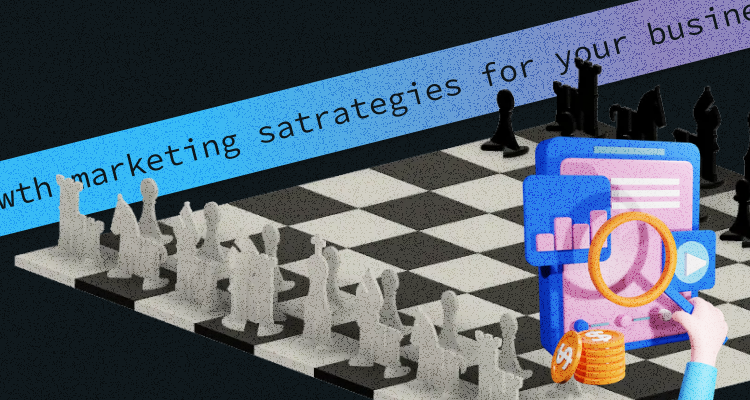Previous week we wrote about growth marketing and how it can help your business grow. This time, we will focus on specific strategies and examples to help your business attract new customers and increase revenue.
Growth Marketing Strategies
1. Invest in Content Marketing
It is one of the most effective growth marketing strategies. You can inform, educate, and interest your audience by creating a lead-generating content marketing strategy. You can do this through blog posts, eBooks, online courses, videos, and more. The goal is to demonstrate your expertise, authenticate your business, build trust with your audience, and drive traffic to your website, where you can convert them into leads and customers.

Source: tinyhouseblog.com
One great example of content marketing is Airbnb. They've created an Airbnb Magazine platform, which features travel guides, stories from hosts and guests, and other travel-related content. They've also produced several short films that showcase unique travel experiences, all of which help create a solid emotional connection with their brand.
2. Create a Free Tool
Building a free tool that addresses your audience's pain points can effectively attract new customers. Offering something that your target audience needs will naturally increase their interest in your product or service. For example, Hubspot provides a set of free tools ideal for different segments of its user base or wordstream’s free Google Ads Performance Grader.
3. Build an Automated LinkedIn Lead Generation Machine

You can turn LinkedIn into a lead-generation machine by optimizing your company page, building a hyper-engaged network, creating value-packed content, and using targeted outreach. You can even build a sales pipeline through video nurture campaigns. An example of a brand that has done this effectively is Hootsuite.
Hootsuite regularly publishes informative and insightful LinkedIn articles on various topics related to social media marketing, offering practical tips and advice for their target audience.
Secondly, Hootsuite uses LinkedIn to showcase its company culture and values through employee profiles and behind-the-scenes content. It helps humanize the brand and connect with its audience, ultimately increasing brand loyalty and advocacy.
Thirdly, Hootsuite actively engages with its LinkedIn community by responding to comments and messages, sharing user-generated content, and participating in relevant industry conversations.
4. Use Personalization Technology
Personalization technology enhances the customer experience by building loyalty, multiplying conversion rates, decreasing cart abandonment, and increasing average order value. For example, e-commerce brands can create a customized shopping experience to suit shoppers' preferences. In contrast, B2B brands can personalize their website based on behaviors and context with tools like Hyperise.
5. Create Hyper-Personalized Email Campaigns
Email campaigns can also be hyper-personalized to create more meaningful customer communication. For example, Airbnb uses personalized emails to encourage guests to complete their booking process.
6. Use Chatbots and Video Chats
Automating the sales and support process allows you to optimize communication with your leads and customers. Chatbots and video chat tools are great options for doing so. For example, e-commerce company Lulus uses chatbots to assist customers with questions and purchases. How to create your own chatbot, read in our article here.
7. Use Conversion Rate Optimization
For both the acquisition and activation phases, conversion rate optimization is key. By creating a conversion funnel based on the actions you want your website, and visitors to take, you can find drop-off points and identify ways to patch them up through segmentation and A/B testing. For example, Home Depot has optimized its conversion rate to improve its online checkout process and increase sales.
8. Use Social Proof
Social proof is a powerful way to build trust and credibility with your target audience. It involves using positive reviews, testimonials, endorsements, and other forms of social proof to demonstrate the value and effectiveness of your product or service.
One example of social proof is the use of customer reviews on e-commerce sites like Amazon or Yelp. These reviews help potential customers make informed decisions about products or services and can significantly impact conversion rates.
9. Create an Affiliate Program
An affiliate program is a marketing strategy where businesses pay affiliates a commission for promoting their product or service. It’s a cost-effective way to expand your marketing reach and generate new leads and sales. You can set up an affiliate program on your website, offer commission rates for successful referrals, and provide affiliates with marketing materials to help them promote your product or service. One example of a successful affiliate program is the one offered by Dropbox, which rewards users with free storage for successful referrals. Another great example is the AADS affiliate program.
10. Leverage Chatbots for Customer Support
Chatbots are a type of artificial intelligence technology that can be used to provide customer support and assistance. They can be programmed to answer frequently asked questions, provide product recommendations, and assist with ordering. By leveraging chatbots, you can improve the customer experience and reduce the workload on your customer support team. One example of a company that uses chatbots for customer support is H&M, which has integrated chatbots into its website to provide customers with instant assistance.
In addition, you can offer a free trial or demo. This is a powerful way to attract new customers and increase conversions. By giving potential customers a chance to try your product or service before committing to a purchase, you can reduce the perceived risk and increase their confidence in your brand. One example of a company that offers a free trial is Grammarly, which provides a free version of its writing software that users can upgrade to a paid version with more features.
Conclusion
In conclusion, implementing growth marketing strategies is crucial for businesses looking to expand and scale. By investing in content marketing, building free tools, using personalization technology, and leveraging social proof and chatbots, businesses can acquire new customers, retain existing ones, and drive revenue growth. Remember to experiment and find what works best for your specific industry, audience, and product/service offering. Follow these strategies and watch your business skyrocket!

